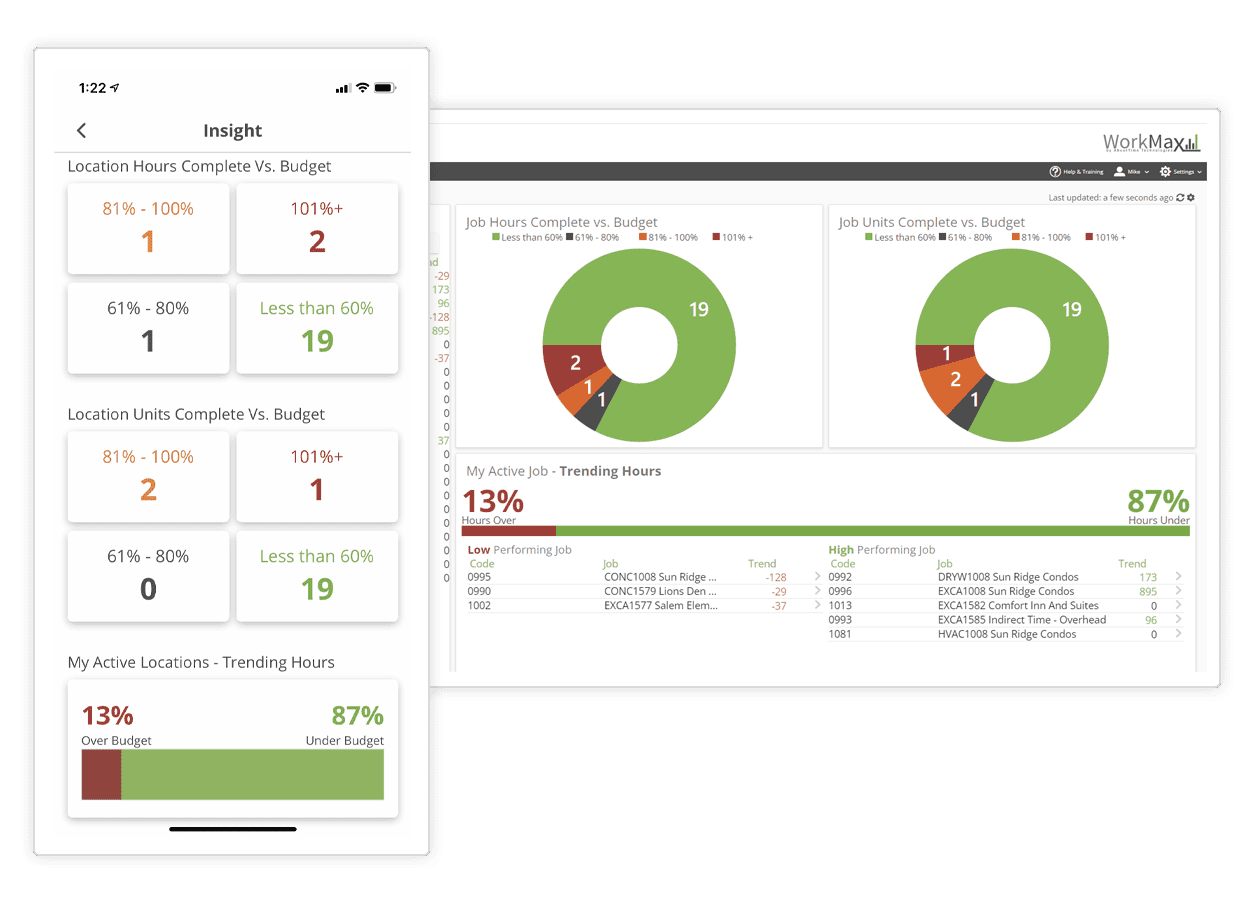- Reduce project expenses with advanced financing predictions
- Drill down into tasks to quickly pivot resources when needed
- Use predictive metrics to evaluate developments in your project
Construction Data Analytics
Receive live project updates to track progress as it happens.



WorkMax INSIGHT seamlessly integrates with other WorkMax modules for a holistic view of your business operations. Eliminates data silos that existed across different departments.
Plus, INSIGHT can connect to over 100 third-party systems to streamline your operations.

Do More in Less Time

Work Anywhere, Anytime

Custom Reports

Real-Time Productivity

Restrict Inputs

Customize Flex Fields

Flexible and Affordable

Rapid Implementation

Complete Visibility
WorkMax INSIGHT is a comprehensive productivity management software that helps construction companies monitor project progress and construction costs through digital tools. Our features enable project managers to track:
These features provide construction businesses with meaningful insights for complete visibility across their construction operations.
WorkMax INSIGHT offers construction managers seamless integrations designed specifically for the construction sector. Our construction productivity tracking software bridges data gaps between your systems, helping construction firms optimize construction labor productivity while maintaining accurate payroll and accounting records.
By connecting data across platforms, construction contractors gain deeper visibility into employee productivity levels, construction site productivity metrics and financial health metrics for enhanced project outcomes and risk management.
Construction productivity tracking software like WorkMax INSIGHT implements key strategies to drive operational efficiency and project outcomes in the construction sector by addressing construction productivity issues through our industry-leading digital tools.
WorkMax INSIGHT provides construction companies with meaningful insights for real-time decision-making and improved productivity levels.
WorkMax INSIGHT helps construction businesses track and analyze productivity in construction through detailed reporting. As a comprehensive productivity management solution, it enables project managers to monitor key performance indicators (KPIs) and gather meaningful insights about how construction site productivity impacts financial outcomes.
WorkMax INSIGHT gives construction contractors real-time monitoring capabilities for optimal construction process management:
By tracking time, attendance, equipment usage and construction site productivity, you can generate daily reports to optimize the productivity of construction workers and address potential issues promptly.
Vendrix is now a part of WorkMax!
Learn, Network and More at Our User Conference: CONVERGE25!